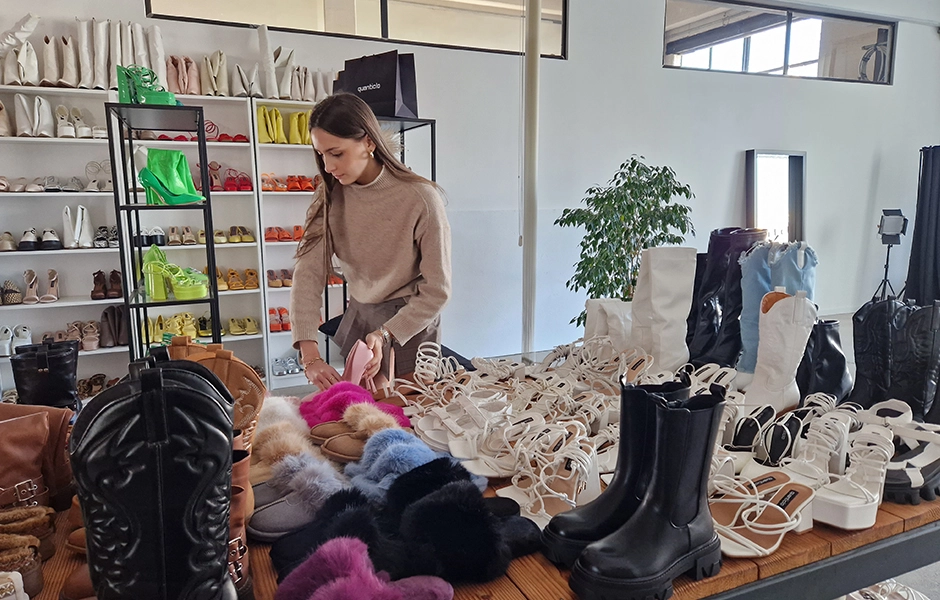Quiet Luxury or Fast Fashion: Consumers Are Buying Both

Quiet luxury is a timeless style rooted in craftsmanship, elegance, and logo-free staples with lasting value. Though not new, it’s making a comeback, led by brands like Loro Piana, The Row, and Celine.. As InStyle Magazine puts it, it’s about “making a presence without making a noise.” Quiet luxury buyers invest in simplicity—think premium knitwear, classic trench coats, minimalist accessories, and timeless footwear.
In contrast, fast fashion offers low-cost, trend-driven clothing produced quickly and in bulk. Brands like H&M, Zara, Forever 21, and Shein thrive on visibility and instant appeal.
Traditionally, quiet luxury and fast fashion served separate markets. Now, consumers blend both, choosing based on need, desire, and occasion.
Quiet luxury, once a hallmark of the wealthy, now resonates with a wider audience seeking lasting value and sustainability in their clothing choices.
We were intrigued by this shift and decided to ask consumers about their perspectives on quiet luxury and fast fashion. Here’s what we uncovered.
Quiet luxury is on the fashion shoppers’ radar.
57% of respondents were aware of the quiet luxury concept. And their concept of it is spot on:
What embodies quiet luxury?
78% High-quality materials (fabric, accessories, etc.)
56% Timeless and classic styles / trend-proof
43% Minimalistic design and branding / logo-free
43% Longevity of item or investment
31% Ethical and sustainable practices
We also wanted to know how this plays into their own buying decisions.
What factors are most important in your clothing purchases?
63% Quality of materials
45% Timeless, classic, staple item
37% Brand reputation
31% Environmental impact
30% Latest style or trend
21% Recommended by friends or influencers
These combined factors made us wonder about how consumers decide between quiet luxury and fast fashion. We asked respondents what values drive their clothing purchase decisions:
Values that drive quiet luxury purchases
76% quality of materials
67% timeless and classic styles
66% brand reputation
57% sustainability practices
Values that drive fast fashion purchases
62% shopping convenience and accessibility
59% trendiness and fashion forward
58% price and affordability
54% social influence
As you can see, different values drive choices between quiet luxury and fast fashion. Shoppers are buying from both categories.
What proportion of your current wardrobe is made of quiet luxury items vs fast fashion?
69% quiet luxury
31% fast fashion
This is important for apparel retailers to note as consumers are leaning more towards staple, timeless pieces but still have a sizeable fast fashion proportion in their closets.
Are they satisfied with one more than the other?
Turns out, not really. They’re quite satisfied with both.
69% are highly satisfied with higher-end clothing purchase
66% are highly satisfied with trendy, less expensive clothing purchase
Given a fairly high level of satisfaction, we dove into how they determine which brands they can trust.
What sources do you rely on to learn about the quality of clothing brands?
22% online reviews on the retailer/brand website
19% in-store experiences and staff recommendations
17% friends and family
17% I do not rely on any information
15% social media
8% online lifestyle news and blogs
2% influencers and content creators
It’s notable that despite 15% relying on social media, only 2% are relying on influencers who are typically on social media. This may suggest that brand marketing on social media is having a significant effect. It also underscores the importance of reviews, in-store experiences, and word of mouth marketing.
Being a fulfillment provider, we were curious about where consumers are buying quiet luxury: in- store or online?
Where do you prefer to shop for quiet luxury items?
39% in-store only
31% equally in-store and online
15% online only
15% it depends on the item
The fact that 31% prefer online and in-store highlights the need for a seamless omniexperience. Retailers can drill down into the factors that influence those choices to better meet shoppers’ preferences and needs – and to drive traffic to one channel or the other.

What factors influenced whether you shopped in-store or online?
I chose in-store because of…
85% greater ability to physically examine products
69% personalized experience
I chose online because of…
61% more convenience
55% greater availability of exclusive collections
54% discounts and promotions
Retailers that want to improve traffic can work to improve the areas that shoppers value most when selecting in-store vs online. Again, omniexperience is vital to meeting the needs of consumers. How well are brands doing?
What experiences have you had in-store and online when buying quiet luxury and fast fashion?
There were multiple channels for browsing and buying.
48% Quiet luxury
52% Fast fashion
I was able to access personalized recommendations and content across channels.
52% Quiet luxury
48% Fast fashion
It was easy to transition between online and offline shopping modes (aka, click and collect, buy online, return in-store).
44% Quiet luxury
56% Fast fashion
The brand messaging and aesthetics were consistent across channels.
59% Quiet luxury
41% Fast fashion
The data shows quiet luxury brands shine in personalized content and consistent messaging, while fast fashion brands lead in omnichannel access and seamless shopping transitions.
Apparel retailers can tap into the quiet luxury trend by recognizing that shoppers buy across styles. By aligning with customer values and delivering personalized experiences—from purchase to unboxing—they can boost reviews, word of mouth, and share of sales.
Radial can help you craft a highly personalized eCommerce fulfillment and unboxing experience.
